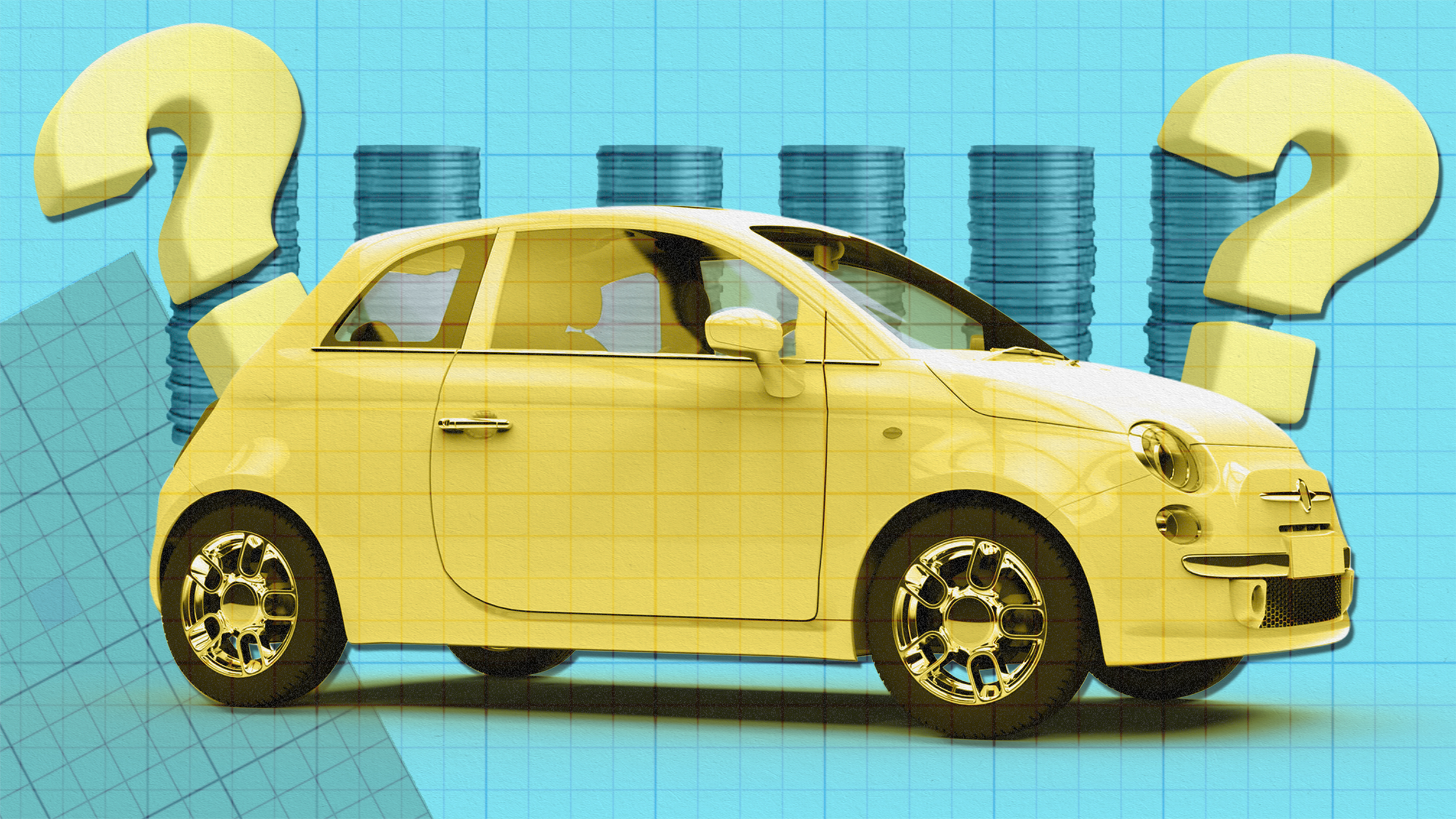Car Finance Explained
A 5 minute read

If your old banger has finally given up the ghost, or the dodgy electrics have been fried for the final time, you might be on the road to finding a new car. But cars – especially shiny new ones – can be expensive, and in the midst of a cost-of-living crisis defined partly by high fuel costs, the last thing you want is to be forking out thousands for an everyday necessity.
So, you might be considering car finance. Car finance is one way to get you behind the wheel of a car without paying the full cost of the vehicle itself. If you’re looking for a new car, or one with a higher initial price point – even if it’s second hand – borrowing the money could give you financial flexibility to get to where you need to be.
Before we get started, it’s important to know that cash is normally the cheapest and most straightforward way to buy a car in the long term. Whether you pay in full, or part-fund it with cash. However, if paying in cash is too much of a stretch, a personal loan is usually cheaper overall than using car finance.
There are various kinds of car finance, and what kind you choose can influence your options. You’ll need to be aware if there are any annual mileage limits (restricting how far you can drive the car in a year), or whether you have the option to buy the car outright at the end of the contract. It’s also important to know that if you buy a car on a finance agreement, the finance provider will own the car during the contract. This means you can’t sell the car and you could lose it if you don’t keep up with the repayments.
If you’re window shopping for car finance, you’ll notice one thing straight away, and it’s called APR. It stands for Annual Percentage Rate, and it’s one of the most important barometers of the price you pay for borrowing money. It tells you the cost of borrowing over a year, and factors in both interest and fees. So, whatever type of finance you’re looking for, assessing the APR and weighing it against others can be crucial to ensuring you're bearing a debt that you can afford in the long term.
Car loan
If you decide to take out a car loan, you’ll be able to apply for the amount of money you need over a specified time period. Once the loan has been approved by the lender and paid to your account, all that’s left is to purchase the car from a private dealership or seller.
Depending on the length of the contract you’ve chosen, you’ll have to pay off the loan in that time using regular instalments. If you have a good credit score, you might be offered a lower interest rate when you apply.
Personal Contract Purchase
Personal Contract purchase involves paying an upfront deposit, followed by monthly instalments to pay off your loan. It’s one of the more common forms of car finance, but it’s probably one of the more complex ones. So buckle up.
What you pay back will be based upon a pre-agreed mileage limit, and any servicing or upkeep costs will be on you. That includes everything from new wiper blades to MOTs. However, sometimes a dealer will include this as a part of the contract, so this could be something to be on the lookout for whilst you’re negotiating the deal.
By the time your contract ends, you’ll be able to buy the car outright by paying the value of the car after the deposit is subtracted. This value will take into account the car’s predicted depreciation over time. There can also be additional fees but these will be stipulated at the beginning of your contract.
If you don’t want to buy the car outright, you could even refinance it with a new PCP deal, or even return the car for pastures new.
Because of an initial lump sum deposit, the monthly repayments can be lower than they might be on other types of deals, and this option can be a nice middle ground between taking out a car loan, and buying a car outright.
However, because you’re not paying off the car itself, the interest rates can be higher than other deals, and the contract can contain hidden charges such as penalties for exceeding mileage limits, or damage to the car whilst you’re using it.
Hire Purchase
Hire Purchase is a deal that sees you hire a car from a lender directly. It might be a good stepping stone to long-term ownership because eventually the car will be yours to keep, once you’ve made a final payment.
To begin a hire purchase you’ll need to pay an initial deposit, before making monthly payments to cover the cost of the vehicle. And, because you’ll be the registered keeper of the car, with the finance company or dealership being the owner, you’ll be liable for the cost of insurance and any servicing should the car need some TLC under your tutelage. As with a PCP agreement, these are variable and stipulated in your contract, so it’s important to check.
If you begin to miss regular payments in a Hire Purchase agreement, you’ll be risking losing the car entirely to repossession, and monthly payments could be higher than some other finance options.
It’s important to take everything, from maintenance costs, servicing, fuel, and repayments into account whilst working out what you can afford.
Car Leasing
Another form of car finance is a car lease. This is a way to gain access to a car, but never own it outright. You’ll just make regular payments for using the car itself. The value of the car overall dictates how much you’ll pay each month, alongside how long you’ll need it for and an agreed mileage. Your monthly payments could be less than if you were paying off credit, but there are extra costs to be aware of.
You’ll need car insurance, for starters, but a fully comprehensive one could protect you from any costs arising from damage to the vehicle that would otherwise be paid by you when you return the car. There might also be extra insurance required to protect against damage or theft, and the company you use to lease the car might want varying levels of cover.
How can I make sure I’m accepted?
A good credit score puts you in the driver’s seat – but that can be hard to get and maintain. You’ll be offered better rates on average (you might notice that the APR you’re offered is lower) if you can prove you’ve got a good track record with credit.
This is why it’s harder to apply for car finance if you’re new to the road. Younger people tend to have no credit history at all.
Whilst a student loan doesn’t count against your credit history, having no credit history is not a good thing if you’re thinking about any kind of loan – even if it’s further afield than driving a car.
For more about credit scores, including tips on how to boost yours, check out our article.
The long and winding road
There’s a lot to consider if you’re looking to drive a car through financing.
Firstly, do you even need to borrow money? Lots of drivers would rather a shinier, newer set of wheels, even if their current vehicle can still drive them from A to B without fuss. With any purchase, figuring out whether it’s a necessity can be the first hurdle.
And if you need it, how much? And how much can you afford to repay? And how long for?
What sort of interest are you looking for?
Another factor with car loans can be your intended use of the car. If you need to travel far and wide, would a mileage limit be a restriction? But if you only need the car for shorter journeys, perhaps a mileage limit could be a good way to balance the costs.
Daunted by debt? You’re not alone
Remember that debt can be daunting, and it can lead to long-term financial difficulties. Taking out any kind of loan is a big decision. MoneyHelper can offer free guidance, if you need it, or check out Citizen’s Advice for free debt advice.
It’s normal to feel overwhelmed by debt, and you’re never alone. The charity StepChange could help you turn the corner with debt and money.
It’s a long and winding road, so ensuring you make the right choice now can alleviate unseen and unwanted future costs.
For more about debt, check out our article Debt: how to break the cycle.
DO NOT EDIT THIS BOX UNLESS YOU'RE NOEL

